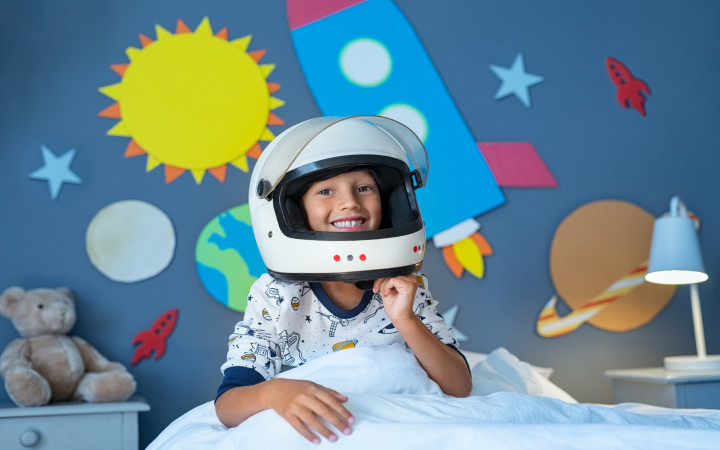Today’s Wonder of the Day was inspired by jaden. jaden Wonders, “how will future astronauts travel to outer space” Thanks for WONDERing with us, jaden!
For decades, NASA sent astronauts into space as part of the Space Shuttle program. That program ended in 2011. Now, curious kids are wondering: How will future astronauts travel to outer space?
The Apollo missions of the 1960s and 70s took people deep into outer space, like to the Moon. But the Space Shuttles took astronauts into low Earth orbit. That means the Space Shuttle traveled around the Earth between 100 and 1,240 miles above its surface.
The Space Shuttle program had 133 successful launches. It completed many interesting missions. Space Shuttles took astronauts into space, launched satellites, and did experiments. They also fixed other spacecraft. The Space Shuttles helped build and maintain the International Space Station (ISS).
The Space Shuttle program used six orbiters. Orbiters look like big, white space planes. The last three orbiters to fly were Discovery, Endeavour, and Atlantis. Challenger and Columbia were both lost to tragic accidents. Enterprise was used as a test vehicle and never flew into space.
When the first Space Shuttle launched, it was a huge leap forward in technology. That’s because it was the world’s first reusable spacecraft. It launched like a rocket, orbited the Earth like a spacecraft, and landed like an airplane.
The last launch of Atlantis brought the Space Shuttle program to an end. Today, NASA is working on newer technology to go back into space. It has also started partnering with private space travel companies.
Of all the private companies making space travel technology today, a few stand out. One is SpaceX, founded by Elon Musk. Today, the company makes trips to the ISS. Musk believes SpaceX could take people to Mars as early as 2024. Another company, Blue Origin, aims to one day take private individuals to space.
The next step for NASA appears to be a return to deep-space missions. It has developed a space capsule called the Multi-Purpose Crew Vehicle (MPCV). The first MPCV, Orion, took its first test flight in 2014 without a crew. One day, it will carry between two and six astronauts into deep space to places like Mars. NASA claims the MPCV will be much larger and much safer to launch and land than the Space Shuttle.
How would you like to travel to space? Would you rather orbit around Earth or go to deep space? Currently, space travel is only for astronauts. But with companies like SpaceX and Blue Origin, you may one day have your chance!
Standards: CCRA.L.3, CCRA.L.6, CCRA.R.1, CCRA.R.2, CCRA.R.4, CCRA.R.10, CCRA.SL.1, CCRA.W.2, CCRA.W.3, CCRA.L.1, CCRA.L.2




